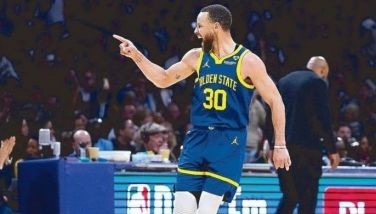One-on-one with Forbes Media CEO Mike Perlis
(Part 1)
I had a chat with Forbes Media CEO Mike Perlis at the 15th Forbes CEO Global Conference, held at the Solaire Theater, where I was invited to participate. It was the first time the Forbes global conference was held in Manila, with about 400 of the world’s biggest business tycoons, multinational CEOs and visionary entrepreneurs in attendance. Leading PR and communications firm Weber Shandwick had tasked its Manila office to handle the publicity and promotions for the recently concluded major event where big names in business came together to discuss and debate about issues that impact global economic growth.
When Perlis accepted the challenge to reboot Forbes Media as president and CEO – the first one outside of the Forbes family to take on the helm – there was a lot of interest on how he would measure up to the challenge.
“So far it’s been great,” he said, adding his expectations were exceeded. Perlis has actually had a long career in publishing with such titles as GQ, Playboy, Men’s Health, and also helped launch a number of digital content sites like Huffington Post (before it got sold to AOL), Buzzfeed, Beliefnet and special interest publications before he decided to become a venture capitalist for over 10 years (with SoftBank Capital) and then joining Forbes Media to revitalize the brand and steer it towards the digital front.
“I’ve always been a friend to, and a fan of, the Forbes brand and what we have done over the last five years is combine the power of an almost 100-year-old traditional magazine with what we have learned about digital content, digital content creation and audience creation. And after five years, I feel like we have made the shift, having effected the transition from a traditional magazine company to a digitally driven, innovative digital company that drives most of its revenue from the digital products. That’s what we set out to do,” he averred.
Not that it was a walk in the park to do so. After all, a lot of other media companies have tried to migrate from traditional digital, but not all were successful, as some didn’t really fly, to put it mildly.
“I think a lot of other brands have big businesses that are getting smaller in print and they have put up a web presence, but then they don’t have the commitment that we have,” he observed. “I don’t think, humbly, that anyone has made it as successfully as we had. We really made the bet and followed it a hundred percent. And that’s what you need to do to make the conversion,” Perlis stated.
Among the initial challenges that Forbes Media had to face was getting the right team of people who were up to the job. “We made a lot of decisions about staff, about setting priorities, and there were people who were up for the challenges of making that shift and there were people who were not. The biggest challenge was putting the right team of people from inside the company and from outside the company who had both the inclination and skills that were based around a digital future. Getting the right team of people marching in the right direction was the biggest challenge, but it was also the great reward, and ultimately (it was) what made it happen,” he discloses.
Just how successful the shift had been can be gleaned from the fact that 70 percent of Forbes Media’s advertising revenue comes from digital – “which was a complete opposite five years ago. And I think in most companies, that’s the number that astounds them the most. They’re having trouble getting that,” the publishing pro disclosed. Considering that Forbes Media, according to its site, gets “36 million unique visitors each month” and that it has “18 million social media followers,” it’s no surprise the 100-year-old brand continues to be iconic.
We asked Mike about “native advertising” – a kind of online advertising where content matches the form and function of the platform where it appears – which has been raising eyebrows from certain media outfits who see it as a tool for promotion. Perlis clarifies: “I wouldn’t use the word promote. What we believe is that there is a ‘content continuum,’ and that content can come to our platform from many different places.
“At the heart of our digital transformation was a new content platform, one that allowed – in addition to fulltime journalists – contributors who we [get] on board and give tools to [for them] to post their own content that they’re experts in, and are very passionate about. Once we achieved that ability to create that platform, where full-timers and contributors can post, we made that set of tools available in a completely separate element of our business,” Perlis stressed.
Native advertising is managed by the business side, not the content side, he adds, explaining that those same tools were made available to marketers not to promote their products but to express “thought leadership, to talk about who they are, what their company stands for, what is important to them. If they go down the road of trying to post about price differentiation, why they are better than the competitor or what makes their product a better buy, [then] we prohibit that. It’s not the point of our kind of ‘native advertising’,” he emphasized.
Fact is, even before “native advertising” became a buzzword, Forbes Media had its BrandVoice – an integrated platform that allows marketers to “join the conversation” with their own narrative and expertise through thought leadership stories or content that defines their company, as opposed to promotion, Perlis explained.
(We will continue our conversation with Mike Perlis in our next column, where we will talk about the future of legacy/traditional publishing on a global and Philippine perspective.)
***
Email: [email protected].
- Latest
- Trending





























